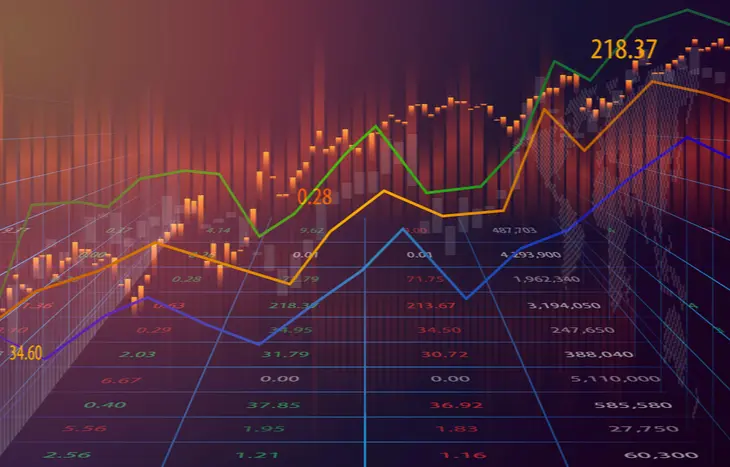Trading the Volatility 75 Index (VIX 75) offers traders unique opportunities to profit from market fluctuations without relying solely on traditional asset classes. Known for its high volatility and potential for significant short-term gains, VIX 75 tracks the volatility of synthetic assets, enabling continuous trading around the clock. However, successfully trading this index requires a solid understanding of its behavior, effective strategies, and meticulous risk management. In this article, we’ll explore comprehensive insights on how to trade the Volatility 75 Index effectively, equipping you with practical knowledge to navigate this exciting and challenging market confidently.
Understanding the Volatility 75 Index

Before diving into trading strategies, it’s crucial to grasp what the Volatility 75 Index (VIX 75) truly is. Unlike conventional indices like the Dow Jones or NASDAQ, VIX 75 measures the implied volatility of synthetic financial assets. Developed by Deriv, it represents market sentiment and trader expectations around future volatility rather than specific asset performance.
A key distinguishing factor is its synthetic nature—VIX 75 doesn’t track real-world assets but rather simulated market movements, providing traders a pure volatility play. Moreover, VIX 75 is available for trading 24/7, offering opportunities even when traditional markets are closed, driven primarily by speculative activity rather than direct economic fundamentals.
How to trade volatility 75 index?
Setting Up for VIX 75 Trading
To effectively trade the Volatility 75 Index, the first step is selecting the right broker or trading platform that supports this unique asset. Brokers such as Deriv offer specialized access to VIX 75, providing tailored trading conditions like competitive spreads, flexible leverage, and advanced trading platforms like MetaTrader 5 (MT5).
After choosing your broker, set up your trading account, completing necessary verification steps. Consider starting with a demo account to familiarize yourself with the platform, market behavior, and trading mechanics without financial risk. Demo accounts help traders test strategies and build confidence before transitioning to live trading, ensuring a smoother and more informed entry into the highly volatile VIX 75 market.
Fundamental and Technical Analysis for VIX 75
Fundamental Analysis
Although the Volatility 75 Index is synthetic and not directly influenced by real-world economic assets, global market events and investor sentiment significantly impact its price movements. Major economic indicators, geopolitical tensions, unexpected global crises, and financial news announcements can dramatically alter market volatility. Keeping abreast of these developments helps traders anticipate volatility spikes or drops, thus informing trading decisions effectively.
Technical Analysis

Technical analysis provides powerful tools to analyze VIX 75’s price action. Popular indicators like Relative Strength Index (RSI), Moving Average Convergence Divergence (MACD), and Bollinger Bands can reveal insights into potential price reversals or trend continuations. Additionally, chart patterns such as double tops/bottoms, triangles, and channels help traders identify key entry and exit points. Choosing appropriate timeframes—ranging from short-term (M1, M5) for scalping to longer timeframes (H1, H4) for swing trading—is essential to tailor technical analysis methods effectively to trading styles.
Trading Strategies for VIX 75

Scalping Strategies
Scalping involves making multiple quick trades to capitalize on small price movements, typically on the 1-minute (M1) or 5-minute (M5) charts. Given VIX 75’s high volatility, scalpers must act swiftly and rely heavily on indicators like RSI, stochastic oscillators, and moving averages. The goal is to capture rapid gains while minimizing exposure time, which also reduces the impact of sudden market swings. Scalping requires a stable internet connection, fast execution, and strict discipline.
Day Trading Strategies
Day traders hold positions for several minutes to hours, closing all trades before the day ends. This approach focuses on identifying intraday trends and riding them for decent profits. Traders often use support and resistance levels, volume analysis, and trend indicators like MACD or EMA crossovers. Effective day trading in VIX 75 requires patience, a clear plan, and proper risk-reward calculations to ensure profitability without overexposure.
Swing Trading Strategies
Swing traders hold trades from a few hours to several days, aiming to catch larger market movements. This strategy suits those who can tolerate some drawdown and prefer a more relaxed trading pace. Swing traders use a combination of fundamental cues and technical indicators to identify strong trends or reversals. Timeframes like H1, H4, or Daily (D1) charts are preferred. Key to success here is timing the entry based on retracements and breakouts and managing trades with trailing stop-losses to lock in profits.
Risk Management in VIX 75 Trading

Trading the Volatility 75 Index can be highly rewarding—but it comes with significant risk. Due to its extreme price swings, solid risk management is not optional; it’s essential for long-term success.
Start with position sizing—never risk more than 1–2% of your trading capital on a single trade. This helps preserve your account even during a losing streak. Leverage, while tempting, should be used cautiously. Excessive leverage can magnify losses just as quickly as gains.
Always set stop-loss and take-profit levels before entering a trade. Stop-losses protect you from devastating losses, while take-profits ensure you lock in gains before the market turns.
Beyond numbers, emotional control is critical. Fear and greed can ruin even the best strategy. Stick to your trading plan, avoid chasing losses, and maintain a trading journal to review and improve your performance over time.
Remember, successful VIX 75 trading is not just about finding good entries—it’s about surviving the bad ones too.
Common Mistakes to Avoid
Many traders are drawn to VIX 75 because of its volatility and profit potential—but this also makes it easy to make costly mistakes. Here are some common errors to steer clear of:
- Overleveraging: Using high leverage without a clear strategy is a fast track to blowing your account. While leverage can increase profits, it also magnifies losses. Always calculate your position size carefully.
- Neglecting Risk Management: Skipping stop-losses or risking too much on one trade often leads to emotional decisions. Proper risk management isn’t just about numbers—it’s about protecting your mindset and capital.
- Revenge Trading: Trying to recover losses by overtrading usually leads to bigger losses. Take a break after a losing streak, re-evaluate your strategy, and trade only when you have a clear setup.
- Ignoring Market Conditions: VIX 75 behaves differently during ranging versus trending periods. Trading without assessing the current market context can result in false signals and mistimed entries.
- Lack of a Trading Plan: Jumping into trades without a defined entry, exit, and risk plan leads to inconsistent results. Create a detailed plan and stick to it—this builds discipline and long-term success.
Avoiding these mistakes can dramatically improve your odds of staying profitable in the long run.
Advanced Tips and Resources
Once you’ve mastered the basics of VIX 75 trading, it’s time to level up with more advanced practices and learning tools to stay ahead of the curve.
- Maintain a Trading Journal: Document every trade—entry and exit points, trade size, reason for entry, and outcome. Over time, patterns will emerge, helping you refine your strategy and eliminate recurring errors.
- Backtest Your Strategies: Before risking real money, test your strategies on historical VIX 75 data. This helps you validate your approach and understand how it performs across different market conditions.
- Use Multiple Time Frame Analysis: Combining short-term and long-term charts gives a better perspective. For example, you might use a 4H chart to determine the overall trend and a 15M chart to time entries and exits.
- Stay Updated: Even though VIX 75 is synthetic, global news and financial events still affect market sentiment. Use economic calendars, trading news platforms, and forums to stay informed.
- Engage With Trading Communities: Join online forums, Telegram groups, or Discord servers focused on VIX 75. Sharing insights and learning from experienced traders can accelerate your growth and provide real-time support.
- Invest in Continued Learning: Enroll in structured courses or follow YouTube channels and blogs that focus on volatility trading. Staying committed to learning ensures you adapt as markets evolve.
By consistently applying these advanced practices, you not only sharpen your trading edge but also build the habits that separate professional traders from amateurs.
Conclusion
Trading the Volatility 75 Index can be highly rewarding—but only for those who approach it with skill, strategy, and discipline. From understanding how the index works to implementing well-defined trading strategies and mastering risk management, success comes from preparation and consistency.
Avoid the common mistakes that derail many traders, and don’t underestimate the value of continuous learning and community engagement. Whether you’re just starting out or looking to refine your edge, VIX 75 offers endless potential—if traded wisely.
Start with a demo account, build your foundation, and step into live trading only when you’re ready. The volatility may be wild, but with the right approach, so can be the rewards.


